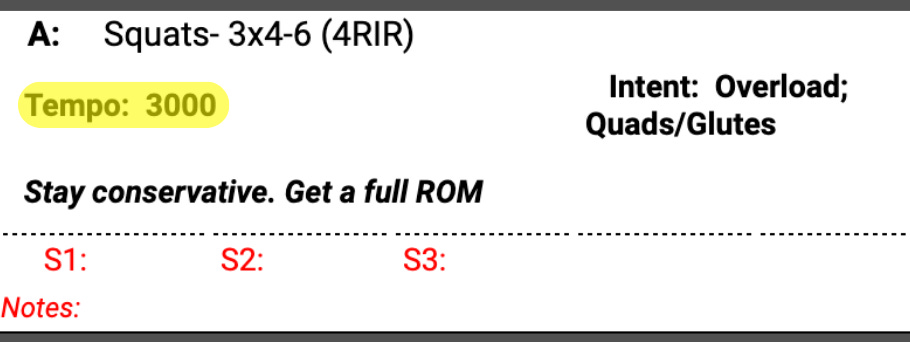Training 101
-
Terms To Know
Terms To Know -
Anatomy and BiomechanicsAnatomy and Biomechanics
-
Deciphering Training ConceptsDeciphering Training Concepts
-
Exercise Order
-
Exercise Selection
-
Set/Rep Prescription
-
Tempo
-
Rest Periods
-
Intent
-
Recommendations, Cues and Details
-
Range-of-Motion (ROM)
-
Failure and IntensityTypes of Failure
-
Modulators of Intensity2 Topics
-
Warming Up and Cooling DownGeneral Warm-Ups
-
Specific Warm-Ups
-
Feeder Sets
-
Warm-Up Sets
-
Cooling Down
-
Biofeedback
-
Progression ModelsProgression Models
-
Linear Progression
-
Double Progression
-
Triple Progression
-
Volume Progression
-
Technical Progression
-
Neurological Progression
-
Modifying The PlanModifying the Plan
-
Injury/Pain
-
Unavailable Equipment
-
Changing Order of Exercises
-
Short on Time
-
Bad Workouts
-
Different Gyms/Equipment
-
Intentional and Unprogrammed Rest Days
-
Unintentional and Unprogrammed Rest Days
-
Plateaus and SetbacksPlateaus and Setbacks
-
Injury
-
Sickness
-
Consistently Poor Biofeedback
-
Missing Workouts
-
Stalled Progress
-
Recovery StrategiesRecovery Strategies
-
Caloric Balance
-
Sleep
-
Stress Management
-
Light Cardio
-
Foam Rolling
-
Stretching
-
Cold Therapy
-
Heat Therapy
-
Contrast Therapy
-
DeloadingDeloading
-
When To Deload5 Topics
-
How To Deload5 Topics
-
What’s Next?Assess Progress
-
Run It Back
-
Modify
-
Beginning The Next Phase
Quizzes
Participants 456

Tempo refers to the speed you perform each rep of an exercise. We can break tempo down into four components: 1) the eccentric, 2) the pause in the stretch, 3) the concentric, and 4) the pause in contraction.
The eccentric, or “negative,” portion of a lift is when you are resisting gravity. In the case of the bench press, this is when you are lowering the bar to your chest in a controlled manner.
The pause in the stretch (transition from eccentric to concentric) will be when your working muscles are most lengthened in the end point of the eccentric. This is a place where pauses are commonly placed to increase the intensity, forcing the muscles to overcome inertia and avoid reliance on the stretch reflex. With the bench press, the pause would be incorporated when the bar is touching your chest (or at the lowest point in the ROM).
The concentric, or “positive,” phase is where you are actively lifting the weight and moving it through space. With the bench press, this would correspond to pushing the barbell off your chest.
The pause in contraction ( transition from concentric to eccentric) will be when your working muscles are most shortened in the end point of the concentric. This is another place where pauses are commonly added to increase intensity by forcing the muscles to statically contract and generate more time under tension (TUT). This would be at the top of a bench press where your arms are locked out.
It is important to note that even though a tempo is dictated in a specific way, control of the ROM and optimal execution are always superseding. If slowing the tempo even more will allow us to perform better and limit risk of injury, that is encouraged!
Tempo can be written in shorthand using a sequence of 4 numbers that each refer to a respective portion of the range of motion (ROM).
For example, 4101 would translate as “4 second eccentric, 1 second pause in the stretch, powerful concentric, and 1 second pause in the contraction.”
*2000 is our default/standard tempo for hypertrophy training.
Some movements will not have a defined tempo (e.g. walking lunges, plyometrics, isometrics, etc) but the basic standards of rep-execution should always be present.
